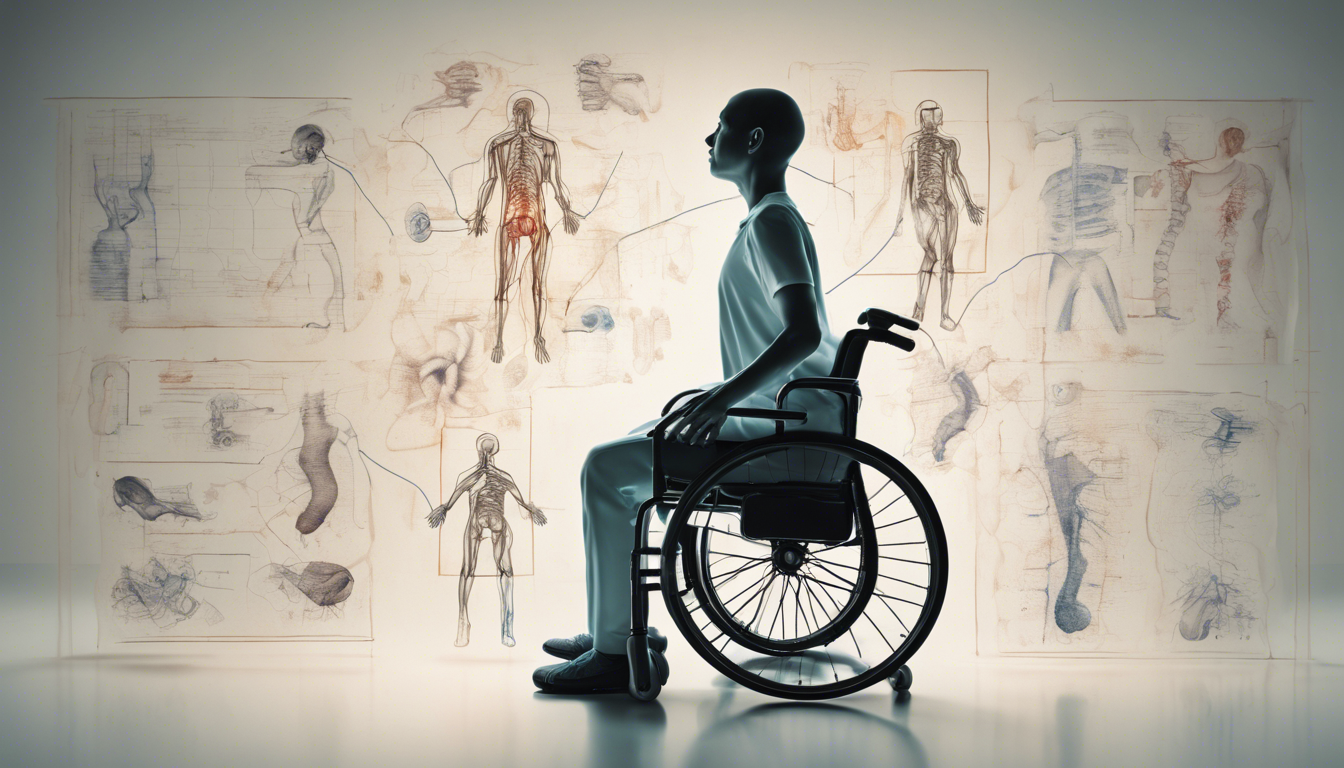Sciatica is a term that describes the pain radiating along the sciatic nerve, which branches from your lower back down to your legs.
For many individuals, this condition can lead to significant disability from sciatica, impacting their mobility and daily activities.
Understanding the symptoms, causes, and available treatment options is essential for anyone affected by this condition.
In this article, we will explore the intricacies of sciatica, the disabilities it can cause, and what can be done to mitigate its impact on your life.
Your Sciatica Pain-Free Future Starts Here – Click to Learn More!
Key Takeaways
- Sciatica can lead to significant disability if not properly managed.
- Common symptoms include pain, tingling, and weakness in the lower back and legs.
- Poor posture and herniated discs are among the main causes of sciatica-related disability.
- Effective treatment options range from physical therapy to surgical interventions.
- Timely medical attention is crucial for minimizing the long-term effects of sciatica.
What is Sciatica and How Does It Cause Disability?
Sciatica refers to the pain that radiates along the path of the sciatic nerve, which branches from the lower back through the hips and buttocks and down each leg.
This condition typically arises when a herniated disc, bone spur, or narrowing of the spine compresses the nerve.
The pain can vary widely, from mild to debilitating, and it is often accompanied by numbness, tingling, or weakness in the leg or foot.
For many individuals, the discomfort and limitations caused by sciatica can lead to significant disability from sciatica.
Tasks that were once routine, such as standing for long periods, walking, or bending, may become incredibly challenging, making it difficult to maintain employment or engage in daily activities.
Understanding the impact of sciatica on mobility and quality of life is crucial for both patients and healthcare providers when developing effective treatment plans.
Common Symptoms of Sciatica-Related Disability
Sciatica can lead to significant disability from sciatica, impacting daily life and reducing overall quality of life for many individuals.
Common symptoms associated with this condition include sharp or burning pain that radiates from the lower back down through the buttock and into the legs.
This discomfort can vary from mild to severe and is often aggravated by prolonged sitting, standing, or movement.
Additionally, individuals may experience numbness, tingling, or weakness in the affected leg, making it challenging to perform routine tasks.
Understanding these symptoms is crucial for recognizing the impact of sciatica and navigating appropriate treatment options to manage the disability associated with it.
‘Disability is not a badge of shame, but a badge of resilience.’ – Unknown
Possible Causes of Sciatica and Its Impact on Daily Life
Sciatica, characterized by pain radiating along the sciatic nerve from the lower back down to the legs, can significantly impact daily life and, in some cases, lead to disability from sciatica.
Understanding the possible causes of this condition is crucial for effective management and prevention.
Common triggers include herniated discs, spinal stenosis, or even muscle spasms that compress the nerve.
As the pain intensifies, individuals may find it challenging to perform routine activities, from walking to bending, resulting in reduced mobility and independence.
Thus, the implications of sciatica extend beyond physical discomfort, often affecting mental well-being, work productivity, and overall quality of life.
Early intervention and appropriate treatment plans are essential in mitigating the risk of potential disability from sciatica, allowing individuals to regain control over their daily activities.
Your Sciatica Pain-Free Future Starts Here – Click to Learn More!
Treatment Options for Managing Sciatica-Related Disability
Managing disability from sciatica requires a multi-faceted approach tailored to the individual’s specific symptoms and severity level.
Treatment options can include physical therapy, which focuses on strengthening the back and improving flexibility; lifestyle changes, such as weight management and regular exercise; and the use of anti-inflammatory medications to reduce pain.
For some patients, advanced treatments like epidural steroid injections or even surgery may be necessary, particularly if conservative methods fail to alleviate the persistent symptoms.
Additionally, complementary therapies such as acupuncture or chiropractic care can also be beneficial in managing pain and improving mobility.
It’s essential for individuals experiencing disability from sciatica to work closely with their healthcare provider to devise a personalized treatment plan that addresses their unique needs.
Preventive Measures to Avoid Disability from Sciatica
Sciatica is a condition that can lead to significant discomfort and even disability from sciatica if not properly managed.
To prevent this, it’s essential to adopt a proactive approach to your health.
Start by maintaining good posture, especially when sitting for prolonged periods.
Ergonomic chairs and workspaces can greatly reduce pressure on your spine.
Regular physical activity, including stretching and strengthening exercises, is crucial in keeping the muscles around your spine supported and flexible.
Pay attention to your body’s signals and avoid heavy lifting or sudden movements that could strain your back.
Additionally, practicing stress-reduction techniques like yoga or mindfulness can help minimize tension in your muscles and reduce the risk of flare-ups.
By taking these preventive measures seriously, you can significantly lower the chances of experiencing disability from sciatica and enjoy a more active, pain-free life.
FAQs
What is sciatica and how does it lead to disability?
Sciatica is a condition characterized by pain that radiates along the path of the sciatic nerve, which extends from the lower back down through the legs.
It can lead to disability when the pain and associated symptoms significantly hinder daily activities and the quality of life.
What are the common symptoms associated with sciatica-related disability?
Common symptoms include sharp or burning pain that travels down one leg, numbness or weakness in the affected leg, tingling sensations, and difficulty in moving the leg or foot.
What causes sciatica and how does it impact daily life?
Sciatica can be caused by several factors, such as herniated discs, spinal stenosis, or degenerative disc disease.
These conditions can affect mobility and lead to chronic pain, thereby impacting daily activities such as walking, sitting, and standing.
What treatment options are available for managing disability from sciatica?
Treatment options include physical therapy, pain management techniques, medications, and in some cases, surgery.
Lifestyle changes like exercise and appropriate ergonomics can also assist in managing the condition.
When should I seek medical attention for sciatica symptoms?
You should seek medical attention if you experience severe pain, numbness or weakness in the leg, difficulty controlling bowel or bladder functions, or if symptoms persist despite home treatment.






